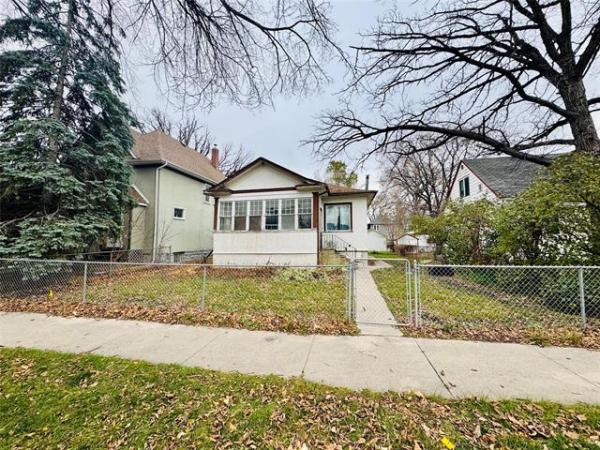So the newlyweds went to a gallery downtown, bought a landscape and hung it up. A few weeks later, they argued about it. "Barb thought it was a river and I thought it was a road. Then we realized neither of us really liked it. So we took it back."
Their first foray into the art world was short and inauspicious, but their second buying experience was totally different. They went to a local art gallery (which no longer exists) and were encouraged by the manger/artist to look around and take their time.
"We chose a very large abstract piece," McInnes says. Today, it hangs in Barb's office. He can't remember the price -- was it $150 or $450? Either way, it was one month's salary at IBM, where McInnes worked at the time.
The McInneses repeated the buying process, to the point where they had paintings in their basement, their attic, even under their bed. Eventually, they decided to share with the public, establishing the Glenn and Barbara McInnes Family Collection at Carleton University (they're both Carleton grads). Over nine years, they donated more than 200 works. Since 2004, they've also sent four pieces to the Beaverbrook Gallery in Fredericton, NB. But that doesn't mean the McInneses' walls at home are bare.
They're plastered with all kinds of modern wonder pieces, including an Andy Warhol print of Elizabeth Taylor that McInnes bought years ago at a show in Vancouver for $15. It's worth, well, rather more now.
McInnes and his wife ended up with a vast art collection without really meaning to because they had been bitten by the bug, he says. And yet, many people suffer the same bite, but never buy a single piece of original art.
Is it because galleries are intimidating? Is it because they think original art is prohibitively expensive? Or is it because it never occurs to them to do it?
It's some or all of the above.
Dale Smith, owner of Dale Smith Gallery in Ottawa, was recently at HomeSense, where she spotted a young man buying three decorations for his wall. They were all from the bargain bin, but for the price of the three, Smith figures the man could have bought an original piece of art from her.
"I thought to myself, 'I wonder if he realizes he could buy something original.' Often it doesn't occur to people because they think original art costs too much," she says. "They think it costs thousands of dollars."
Another of Smith's theories? People feel safer buying off-the-rack art.
"I think people are often afraid (an original piece) will say something very revealing about them. They think it's going to say something about themselves that isn't accurate or that they don't want other people to know about them. They feel they're setting themselves up for criticism or judgment.
"It's safer to buy something where they can simply say it was on sale, or that it matched the couch. They don't look at it as much as an expression of their personality."
It doesn't have to be that way. To demystify the art world, we consulted gallery owners, collectors and artists and came up with this primer for the would-be art buyer.
1. DO YOU LOVE ME?
"I think you should buy a piece of art because you love it," says Don Monet, owner of Ottawa's Cube Gallery. "It's a lesson Monet learned several years ago. He'd seen a painting by Group of Seven artist A.J. Casson and "liked it OK," but mostly he thought the price was really low.
"I went into Wallack's (gallery) and asked (owner John Wallack) about it. He asked me if I loved it. When I said no, he said I shouldn't buy it."
2. YOU DON'T HAVE TO BE RICH
Often, an original piece by an emerging artist can cost less than a poster you have to get framed. "You can buy a piece of art without breaking the bank," says Monet.
Robert Koyman of Koyman Galleries agrees. "A lot of people don't know original art can be affordable," he says.
If there is a painting that would break the bank or at least overtax the account, most galleries will let you buy on a payment plan. "If I see that someone really loves a piece of art, I will really do anything I can to see that they get it," says Smith.
3. MAKE ME A MATCH
Monet sees his job as matching people with the right piece. "I really do feel as though I'm a matchmaker."
4. IT'S A GALLERY, NOT A TEMPLE
People are afraid to go into galleries.
"They think it's going to be intimidating, or they think they'll need a body of knowledge about art," says Smith.
"A lot of people are intimidated at the outset because they're not comfortable in the language they think they need," says Brandon McVittie, co-owner of Artguise in downtown Ottawa. "It's not necessary to have an art history background. We try to recognize that most people are buying art for their homes. It should not be a hoity-toity experience."
5. SOUL-BARING ISN'T NECESSARY
"You don't always know why a piece of art speaks to you. Sometimes you think you do, but you can't express it. So what?" says Smith. "The bottom line is that you like it, that it means something to you. That's all that matters.
"You don't always need to know what the artist intended. Once a piece of art goes into the public realm, it becomes about the viewer's relationship with that work of art. Some people like to be aware of their conversation with a piece; they want to explore and understand it. But often, it's just a gut feeling."
6. GALLERY HOP
The guys at Artguise (McVittie and business partner Jason Vaughan) encourage customers to see as much art as they can to help them figure out what they like. "We even tell them to go on the Internet and surf around," McVittie says.
Smith agrees. "I tell people to go to all kinds of galleries -- private galleries, national galleries, galleries on your travels. Then you discover what you like and what you want to purchase."
7. INVESTMENT IRRELEVANT
Buying art you think will increase in value is a gamble. It's not likely those who stopped on the side of the road in Digby, Nova Scotia to buy Maud Lewis folk art paintings -- some of which were done with boat paint -- from the artist herself for $5 in the 1940s realized they'd now be worth upward of $12,000. The experts point out that, for the most part, the increase in value is not likely to be seen in your lifetime anyway.
But it is nice to know that the artist you're buying takes his or her work seriously. Obviously, they must have talent, but the artists who work hard are the ones who succeed.
8. SUPPORT LOCAL ARTISTS
Buying art locally means supporting artists in your community. That doesn't mean you should always buy in the city you live in -- a piece of art from your travels sure beats a decorative spoon or beach towel -- but if it's karma you're looking for, you can probably get a little by supporting the city's artists.
--Canwest News Service



